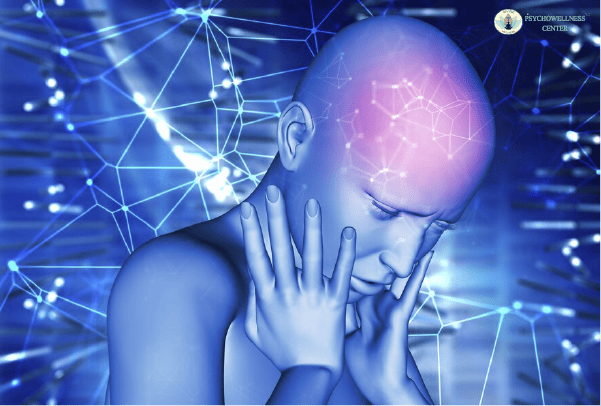How Neuroplasticity Exercises Can Help in Anxiety Relief

Anxiety is one of the most prevalent mental health challenges today, affecting millions worldwide. It often feels like a persistent, unwelcome visitor, disrupting thoughts and daily activities. However, the brain’s ability to change and adapt — a phenomenon known as neuroplasticity — offers a powerful avenue for relief. Through targeted exercises, neuroplasticity can help reshape thought patterns, reduce anxiety symptoms, and promote mental resilience.
Understanding Neuroplasticity
Neuroplasticity is defined as the brain's capacity to restructure itself by creating new neural pathways throughout an individual's life. This adaptability allows the brain to learn new skills, recover from injuries, and modify behaviors and emotions. For individuals with anxiety, neuroplasticity can help unlearn fear responses and replace them with healthier, more constructive patterns of thinking.
Anxiety often arises from overactive neural pathways that amplify fear and worry. By engaging in exercises that promote neuroplasticity, it’s possible to calm these pathways and create new, positive associations that alleviate anxiety symptoms. Moreover, neuroplasticity can be a vital tool for those struggling with depression, substance abuse, unstable relationships, poor health, or even insomnia, as it can help rewire the brain's response to stressors, emotional pain, and unhealthy habits.
Neuroplasticity Exercises for Anxiety Relief
Mindfulness Meditation
Practice: Spend 10–15 minutes daily focusing on your breath or a specific sensation. Acknowledge anxious thoughts without clinging to them. Over time, this practice rewires the brain to respond more calmly to stress.
Gratitude Journaling
Writing down things you are grateful for shifts focus from anxiety-driven thoughts to positive emotions. Gratitude helps create new neural pathways associated with optimism and contentment, which can also reduce symptoms of depression.
Practice: Write down three things you’re grateful for each day, focusing on the details and emotions they evoke.
Cognitive Behavioral Therapy (CBT) Techniques
Practice: Work on identifying negative automatic thoughts, challenging their validity, and replacing them with more constructive beliefs.
Physical Exercise
Regular physical activity releases endorphins, reduces cortisol levels, and promotes the growth of new neurons. Exercise also strengthens connections in brain regions that regulate mood and stress responses, making it particularly effective for individuals dealing with depression, anxiety, and even substance abuse recovery.
Practice: Engage in 30 minutes of aerobic exercise, such as walking, jogging, or dancing, at least five times a week.
Visualization and Positive Affirmations
Visualization techniques involve imagining yourself in calming scenarios or achieving personal goals, while positive affirmations reinforce self-confidence and resilience. Both practices help reshape neural circuits toward positivity, which can be beneficial for those coping with depression, insomnia, or anxiety.
Practice: Spend a few minutes each day visualizing yourself confidently navigating an anxiety-provoking situation. Combine this with affirmations like, “I am strong and capable of managing my feelings.”
Brain-Training Apps and Games
Apps designed to improve focus and reduce stress, such as Lumosity or Calm, use neuroplasticity principles to help users build healthier brain habits. These tools can also aid in managing depression, substance abuse, and other mental health conditions by fostering positive cognitive changes.
Practice: Dedicate 10–15 minutes daily to engaging with an app or game that challenges your brain and promotes relaxation.
Breathing Exercises
Controlled breathing can reduce stress by activating the parasympathetic nervous system, which counters the fight-or-flight response often associated with anxiety, insomnia, and substance abuse triggers.
Practice: Try box breathing — inhale for four counts, hold for four, exhale for four, and hold for four again. Repeat for five minutes.
Exposure Therapy
Gradually facing fears in a controlled and safe manner helps desensitize the brain to anxiety triggers, encouraging the formation of new, non-anxious neural connections. This technique can also be used to address the triggers of substance abuse cravings and insomnia.
Practice: Begin with small, manageable exposures to a feared situation and progressively increase the challenge over time with professional guidance.
Learning New Skills
Engaging in novel activities, such as learning a language, playing a musical instrument, or taking up painting, stimulates neuroplasticity and shifts focus away from anxiety, depression, or substance abuse-related thoughts.
Practice: Dedicate an hour a week to a new skill or hobby that interests you.
Social Connections
Positive social interactions strengthen neural pathways related to trust and empathy while reducing stress-related activity in the brain. Building a support network is crucial for those struggling with anxiety, depression, substance abuse, unstable relationships, and even insomnia.
Practice: Spend quality time with friends, family, or support groups to foster meaningful relationships.
The Science Behind Neuroplasticity and Anxiety Relief
Research supports the effectiveness of neuroplasticity-based interventions for anxiety. Studies have shown that mindfulness meditation reduces gray matter volume in the amygdala while increasing connectivity in regions associated with emotional regulation (Hölzel et al., 2011). Similarly, CBT has been proven to alter dysfunctional neural pathways and enhance coping mechanisms (Goldin et al., 2012).
These findings highlight the brain's potential to rewire itself, even in individuals who have struggled with anxiety, depression, or substance abuse for years. Consistent practice of neuroplasticity exercises strengthens the desired neural connections, making it easier to manage anxiety, insomnia, and other mental health issues over time.
Why Consistency Matters
While neuroplasticity offers hope, it requires commitment and repetition. Just as learning a new skill takes time, rewiring the brain to counter anxiety, depression, or substance abuse involves consistent effort. Set realistic goals, track your progress, and be patient with yourself as you navigate this transformative journey.
Conclusion
Anxiety may seem insurmountable; however, the brain's ability to undergo neuroplastic changes offers a significant means of alleviation. By integrating exercises like mindfulness, physical activity, and positive affirmations into your routine, you can reshape your brain’s responses to stress and foster a calmer, more resilient mindset.
Looking for expert mental health services in Delhi NCR? Visit Psychowellness Center in Janakpuri & Palm for personalized online counseling.
Contribution:- Get personalized mental health care from Dr. (Prof) R K Suri & Ms. Srishti Jain Expert psychologists offering clinical Psychologist & Counselling Psychologist.
- Goldin, P. R., Ziv, M., Jazaieri, H., & Gross, J. J. (2012). Randomized controlled trial of mindfulness-based stress reduction versus aerobic exercise: Effects on the self-referential brain network in social anxiety disorder
- Frontiers in Human Neuroscience, 6, 295. https://doi.org/10.3389/fnhum.2012.00295 Hölzel, B.K., Carmody, J., Vangel, M., Congleton, C., Yerramsetti, S. M., Gard, T., & Lazar, S. W. (2011). Mindfulness practice leads to increases in regional brain grey matter density.
- W. W. Norton & Company. Van der Kolk, B. A. (2015). The body keeps the score: Brain, mind, and body in the healing of trauma. Penguin Books.




SHARE